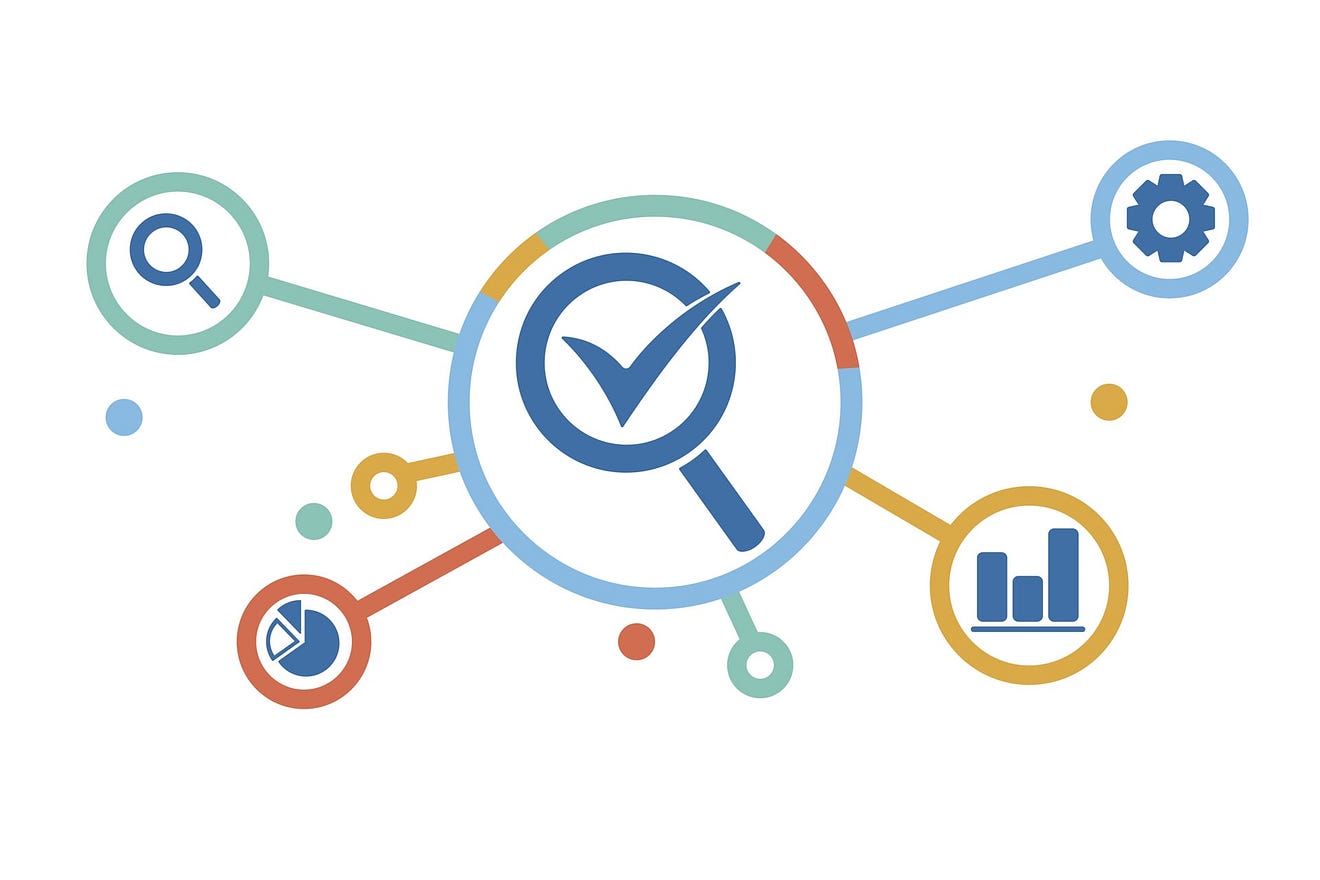Improving Data Quality: The Foundation for Accurate and Reliable Models
This article delves into the significance of feeding high-quality data into machine learning models and sheds light on several data quality issues that, if left unaddressed, can undermine the integrity of data science projects.
In the realm of machine learning, data quality is of paramount importance. The phrase “garbage in, garbage out” succinctly captures the idea that the output of a machine-learning model is only as good as the quality of the data it is fed.
Algorithms rely on the assumption that the data they receive adheres to certain standards and exhibits desirable properties. However, the reality is that our world, ourselves, and the data we generate are far from perfect, carrying inherent imperfections. Understanding and mitigating these imperfections is crucial for building robust and reliable machine learning models.
Let’s delve into them one by one.
DATA QUALITY ASSUMPTIONS
It is important to differentiate between data and quality data. While the term “big data” has gained prominence in recent years, it does not automatically equate to quality data. Merely having a large volume of data does not guarantee its quality or usefulness for training machine learning models. Quality data encompasses various aspects, including accuracy, completeness, consistency, and relevance. By prioritizing data quality, ML engineers can ensure that their models are built on a solid foundation, leading to more accurate and reliable results.
Machine learning algorithms traditionally operate under several assumptions regarding training data, each of which can be a potential source of data quality issues. These assumptions include:
- Equal representation of existing classes: ML algorithms assume that the training data contains an equal representation of all the classes or categories that the model needs to learn. However, in real-world scenarios, some classes may be underrepresented or have limited examples, leading to biased models that perform poorly on these minority classes.
- Equal representation of sub-concepts: Similarly, ML algorithms assume that sub-concepts within each class are equally represented in the training data. Sub-concepts refer to specific variations or nuances within a class. If certain sub-concepts are underrepresented, the model may struggle to generalize well for those cases.
- Distinct regions for instances from different classes: Algorithms assume that instances from different classes occupy distinct regions within the input space. However, in reality, there may be overlaps or ambiguous regions, making it difficult for the model to accurately classify instances.
- Ample number of training instances: Sufficient training instances are required to learn the underlying concepts effectively. Insufficient data may lead to overfitting or underfitting, where the model either memorizes the training data without generalizing well to new examples or fails to capture the underlying patterns altogether.
- Consistent feature values: ML algorithms assume that feature values are consistent and free from errors or inconsistencies. However, in practice, data may contain missing values, outliers, or inconsistencies, which can negatively impact the model’s performance.
- Correct labeling of instances: Accurate and reliable labels are essential for supervised learning. However, human labeling can be subjective or prone to errors, resulting in mislabeled or incorrectly labeled instances, which can introduce noise and affect the model’s ability to learn.
- Informative and relevant features: ML algorithms assume that the features provided are informative and relevant for the task at hand. Irrelevant or redundant features can introduce noise and increase the complexity of the model without contributing to its performance.
- Identical distributions for training and test data: Models assume that the distribution of the training data is representative of the distribution of the test data. If there are significant differences between the two distributions, the model may struggle to generalize well and perform poorly on unseen data.
- Availability of all feature values for all instances: Models assume that all instances have complete feature values, with no missing or unreliable data. However, in practice, missing or incomplete data are common, requiring strategies such as imputation or handling missing values appropriately.
By understanding and addressing these data quality issues, ML engineers can enhance the reliability, fairness, and generalizability of their models. Strategies such as data preprocessing, feature engineering, data augmentation, and careful analysis of biases can help mitigate these issues and improve the overall quality of the data used in machine learning projects.
REAL LIFE IMPERFECTIONS IN DATA QUALITY
It is crucial to address data imperfections to avoid dire consequences in both business applications and individuals’ lives.
- One common data imperfection is imbalanced data, where the distribution of classes is highly skewed, with one or more classes being underrepresented. This can lead to biased models that favor the majority class, resulting in poor performance on minority classes. For example, in credit card fraud detection, if the majority of transactions are non-fraudulent, the model may struggle to accurately identify fraudulent transactions, leading to financial losses.
- Underrepresented data or small disjuncts pose another challenge. Small disjuncts refer to sub-concepts or classes that have limited instances or are infrequently observed. If these sub-concepts are not adequately represented in the training data, the model may fail to learn them effectively, leading to poor performance for these specific cases. For instance, in medical diagnosis, rare diseases or specific variations of a condition may have limited instances, making it challenging for the model to accurately identify and diagnose them.
- Class overlap occurs when instances from different classes exhibit similar characteristics or features, making it difficult for the model to distinguish between them. This can result in misclassifications and reduced accuracy. For example, in natural language processing, distinguishing between sentiment categories like “positive” and “neutral” can be challenging due to the subtle differences in their linguistic expressions.
- Small data or lack of density refers to scenarios where the available training data is limited or sparse. Insufficient data can lead to overfitting, where the model becomes too specialized in the training examples and fails to generalize well to new instances. This is particularly problematic when the underlying patterns are complex or when there is a need for nuanced decision-making.
- Inconsistent data introduces challenges when the values or formats of features vary across instances. Inconsistencies can arise due to data collection errors, different sources of data, or evolving data formats over time. Inconsistent data can undermine the reliability and performance of machine learning models, as they may struggle to handle such variations effectively.
- Including irrelevant data in the training set can introduce noise and increase the complexity of the model without providing any meaningful information. Irrelevant features can confuse the model and hinder its ability to discern relevant patterns, leading to suboptimal performance.
- Redundant data refers to the presence of duplicate or highly correlated instances in the training set. Redundancy can inflate the importance of certain patterns and skew the model’s learning process. It can also lead to longer training times and increased computational requirements without adding significant value to the model.
- Noisy data contains errors or outliers that deviate from the underlying patterns. Noisy data can mislead the model and impact its ability to make accurate predictions. Cleaning and preprocessing noisy data are crucial steps to ensure the model’s robustness and reliability.
- Dataset shift occurs when the statistical properties of the training data differ from those of the test data. This can happen due to various factors such as changes in the data collection process, shifts in the underlying data distribution, or differences in the data characteristics across different environments or time periods. If not addressed, dataset shift can lead to a significant performance drop when deploying the model in real-world scenarios.
- Missing data refers to instances or features with incomplete or unavailable information. Missing data can arise due to various reasons such as measurement errors, data entry issues, or privacy concerns. Handling missing data appropriately, through techniques like imputation or careful analysis of missingness mechanisms, is essential to avoid biased or unreliable model predictions.
These data imperfections, if left unaddressed, can have severe consequences in real-world applications. An erroneous credit card fraud alert, resulting from a biased model trained on imbalanced data, can lead to the loss of a critical investment. A failed tumor detection due to data imperfections may force someone to make life-altering decisions regarding their treatment options. Misjudgment between individuals with similar facial features, caused by biased models trained on inconsistent or irrelevant data, can have grave consequences, leading to unjust convictions or wrongful releases.
The impact of imperfections, whether in the form of data imperfections or biased models, goes beyond financial costs. It can infringe upon personal freedoms, compromise fairness and justice, and even risk lives.
Recognizing the significance of data quality and actively addressing data imperfections is paramount to ensure the ethical and responsible use of machine learning in our society.
It is important to note that not all imperfections should be interpreted as defects in the data itself. While some imperfections may arise from errors during data acquisition, transmission, or collection processes, others naturally stem from the intrinsic nature of the domain. These imperfections manifest regardless of the quality of the data acquisition, transmission, or collection processes.
Now let’s explore three prominent data imperfections: imbalanced data, underrepresented data, and overlapped data. These imperfections primarily arise due to the inherent characteristics of the domain rather than any mistakes made during data collection or storage.
Imbalanced Data
Imbalanced data refers to a situation where the distribution of classes or categories in the dataset is highly skewed, with one or more classes being significantly underrepresented compared to others. Imbalanced data is common in many real-world scenarios. For example, in fraud detection, the occurrence of fraudulent transactions is typically much rarer than non-fraudulent ones. Similarly, in medical diagnosis, certain diseases may be rare compared to the overall population. Imbalanced data poses challenges for machine learning models as they tend to favor the majority class, leading to reduced accuracy and sensitivity in detecting the minority class instances.
Underrepresented data
Underrepresented data, also known as small disjuncts, refers to sub-concepts or classes that have limited instances or occur infrequently in the dataset. These sub-concepts may represent specific variations or rare occurrences within a broader class. For instance, in natural language processing, certain sentiments or emotions may have limited examples, making it challenging for models to learn and generalize well for these specific cases. Underrepresented data can result in models that struggle to accurately capture the nuances and variations within classes, leading to reduced performance in distinguishing these instances.
Overlapped data
Overlapped data occurs when instances from different classes exhibit similar characteristics or feature patterns, making it difficult for classifiers to separate them accurately. Class overlap is prevalent in domains where there are inherent similarities or ambiguous boundaries between classes. For example, in image recognition tasks, distinguishing between similar objects or fine-grained categories can be challenging due to overlapping visual features.
Overlapped data presents a significant challenge for machine learning models, as they may struggle to discern subtle differences and make precise classifications.
By comprehending these data imperfections, ML engineers and practitioners can equip themselves with the knowledge necessary to mitigate their impact on machine learning models. Techniques such as data resampling, class weighting, ensemble methods, feature engineering, and advanced model architectures can be employed to address these imperfections and develop fair, accurate, and reliable systems.
UNDERREPRESENTED DATA
Underrepresented data, also known as within-class imbalance, presents a unique challenge within the realm of imbalanced data.
While between-class imbalance refers to the unequal representation of different classes, underrepresented data focuses on the imbalance that occurs within a single class. This phenomenon manifests as small disjuncts, which are characterized by small, underrepresented sub-concepts within a larger class concept.
Small disjuncts represent clusters of instances that are relatively scarce and less frequently observed compared to the dominant patterns within the class. These sub-concepts often hold valuable information and insights but tend to be overshadowed by the larger, well-represented concepts during the learning process of classifiers. Consequently, classifiers may disproportionately focus on the more prominent patterns, leading to overfitting of these larger disjuncts and subpar performance when classifying new examples that belong to the underrepresented sub-concepts.
The prevalence of small disjuncts is especially notable in healthcare data, where the heterogeneity of diseases, such as various types and subtypes of cancer, coupled with the biological diversity among patients, gives rise to numerous small, distinct sub-concepts.
Similarly, facial and emotional recognition tasks also encounter underrepresented data, as different individuals exhibit subtle variations in their facial features and emotional expressions.
Distinguishing between core concepts, underrepresented sub-concepts, and noisy instances poses a significant challenge in current research. It becomes even more intricate when multiple data imperfections coexist, as is often the case. Researchers strive to develop techniques and methodologies that effectively handle these complexities, aiming to extract meaningful insights from underrepresented data while mitigating the impact of noise and other imperfections.
Addressing the issue of underrepresented data necessitates innovative approaches that consider the unique characteristics and challenges associated with small disjuncts. These approaches focus on enhancing the classification performance for underrepresented sub-concepts, ensuring that classifiers can accurately identify and classify instances belonging to these crucial but often overlooked patterns.
- One such approach is to employ data augmentation techniques specifically tailored to address underrepresented data. Data augmentation involves generating synthetic examples that mimic the underrepresented patterns and introduce diversity into the training data. This can help the classifier to learn and generalize better to the small disjuncts.
- Additionally, techniques such as transfer learning, ensemble methods, and active learning can be employed to leverage knowledge from related domains, combine multiple models, and strategically select informative instances for labeling, respectively.
- Furthermore, feature engineering plays a crucial role in addressing underrepresented data. It involves identifying and crafting informative features that capture the distinguishing characteristics of the underrepresented sub-concepts. Feature selection algorithms, dimensionality reduction techniques, and domain knowledge can guide the selection and creation of relevant features that aid in improving the discriminative power of the classifiers.
It is important to emphasize the significance of collecting and annotating high-quality data that adequately represents the underrepresented sub-concepts. Collaborations between domain experts, data collectors, and machine learning practitioners are crucial to ensure a comprehensive understanding of the domain and to capture the nuances of the underrepresented patterns effectively.
By actively addressing the challenges associated with underrepresented data, researchers and practitioners can improve the performance, fairness, and reliability of machine learning models. This, in turn, paves the way for more accurate and inclusive applications across various domains.
CLASS OVERLAP
Class overlap is a prevalent issue in machine learning that occurs when instances from different classes occupy the same regions in the data space. This phenomenon poses a significant challenge for classifiers as they struggle to differentiate between overlapping concepts, resulting in poor classification performance, particularly for the less represented concepts within these regions.
- Traditionally, researchers have approached the problem of class overlap by either excluding overlapped regions from the learning process, which somewhat neglects the issue, or by treating the overlapped data as a separate class.
- Another approach involves building distinct classifiers for overlapped and non-overlapped regions.
- Additionally, some authors have explored distinguishing between scattered examples across the entire input space and those concentrated along decision boundaries, employing tailored strategies to handle each type differently.
However, recent research indicates that class overlap is a complex and heterogeneous concept encompassing multiple sources of complexity. four main representations of overlap CAN BE IDENTIFIED: Feature Overlap, Instance Overlap, Structural Overlap, and Multiresolution Overlap. Each representation is associated with distinct complexity factors, highlighting the diverse nature of class overlap.
- Feature Overlap refers to situations where different classes exhibit similar patterns or distributions in their feature space. This makes it challenging for classifiers to identify discriminative features and accurately distinguish between the overlapping classes.
- Instance Overlap occurs when instances from different classes cluster together or intermingle, making it difficult to draw clear boundaries between the classes. Classifiers struggle to assign the correct labels to instances located in the overlapped regions, leading to misclassifications and reduced accuracy.
- Structural Overlap refers to cases where the underlying structure or relationships between classes overlap. This can occur when classes share common subclasses or when the hierarchical relationships between classes introduce complexities in the classification process.
- Multiresolution Overlap arises when different levels of granularity or resolutions exist within the data. This can be observed when instances are labeled at different levels of abstraction, and the overlap occurs between concepts at different levels of the hierarchy. Classifiers must account for these varying levels of resolution to accurately classify instances.
Class overlap is not limited to specific domains but can be observed across various real-world applications. For instance, character recognition tasks often encounter class overlap, where certain characters share similar visual features, leading to confusion in classification.
Similarly, in software defect prediction, different types of software defects may exhibit overlapping patterns, making it challenging to distinguish between them accurately. Additionally, in domains such as protein and drug discovery, class overlap can arise due to the similarities in molecular structures or functional properties of different compounds.
The presence of class overlap in these domains underscores the need for effective strategies to mitigate its impact on classification performance and improve the accuracy of machine learning models. Advanced techniques such as ensemble learning, which combines multiple classifiers, and feature selection methods that emphasize discriminative features can help address class overlap. Additionally, exploring hybrid models that incorporate domain knowledge and employ specialized algorithms for handling specific types of overlap can further enhance the performance of classifiers in the presence of class overlap.
By understanding the diverse nature of class overlap and developing tailored approaches to address its complexities, researchers and practitioners can improve the reliability and effectiveness of machine learning models in real-world applications.
In conclusion, the importance of data quality in machine learning cannot be overstated. The assumptions underlying the training data and the imperfections that can arise pose significant challenges for building accurate and reliable models. Understanding and mitigating these challenges is crucial for ensuring the robustness and fairness of machine learning systems.
Data quality assumptions, such as equal representation of classes, distinct regions for different classes, and informative features, provide a foundation for reliable model training. However, real-world data often deviates from these assumptions, leading to biased models, overfitting, and reduced performance. It is essential to address imbalanced data, small disjuncts, inconsistent data, noisy data, and missing data through various techniques like resampling, feature engineering, and careful analysis of biases.
Class overlap presents another complex issue that hampers classification performance. Overlapping features, instances, structures, and resolutions contribute to the challenge of accurately distinguishing between classes. Developing specialized approaches, such as ensemble learning, feature selection, and hybrid models, can help tackle class overlap and improve the accuracy of machine learning models across different domains.
By acknowledging and addressing these data imperfections, researchers, practitioners, and domain experts can work together to create more accurate, inclusive, and reliable machine learning models. Collaboration and a comprehensive understanding of the domain are vital in capturing the nuances of underrepresented patterns and developing fair systems.
Ultimately, by prioritizing data quality, leveraging advanced techniques, and fostering interdisciplinary collaborations, we can pave the way for the widespread adoption of machine learning models that have a positive impact on business applications and individuals’ lives. By striving for accuracy, fairness, and reliability, we can unlock the full potential of machine learning and contribute to a future where intelligent systems enhance decision-making, improve outcomes, and foster positive societal change.








